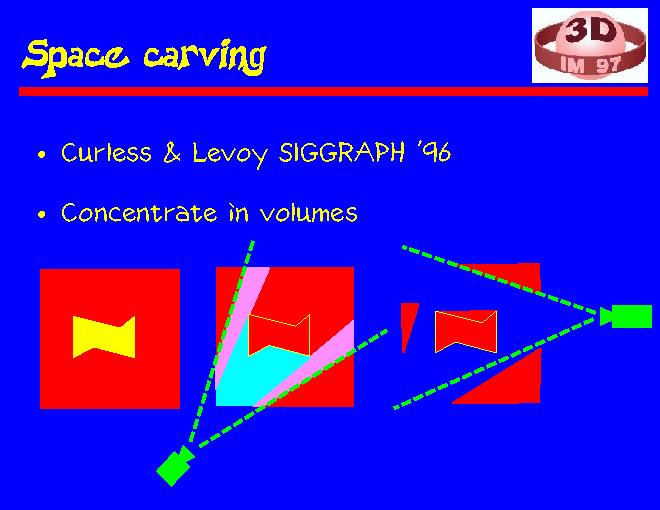Click slide for next, or goto previous, first, last slides or back to thumbnail layout.

Click slide for next, or goto previous, or back to thumbnail layout.
Click slide for next, or goto previous, first, last slides or back to thumbnail layout.

Click slide for next, or goto previous, or back to thumbnail layout.
At around that time Curless and Levoy at Stanford had come up with the idea of space carving, and this idea of concentrating on volumes and explicitly using directional information sounded like a good and robust approach.
How the space carving works is that you first know that the object you want to model is within a certain volume of space. Here, the object is yellow while that volume is red. Then you take a sequence of range scans around the object. In the middle picture the scanner and its viewing frustum are shown in green. We know that if we can see a surface, the space between the scanner and the surface is not part of the object, so we can carve that volume away. That is marked with the light blue color. If we additionally can detect that some parts of the scan see past the object to background, we can carve away even more (pink). Another view carves more, and finally you are left with a connected volume that closely approximates the object.
We can now get an approximation of the object surface by extracting the boundary between free space and the rest. The surface is by definition connected and closed, though it is possible that the object has holes. If some part of the object surface was not seen in any of the scans (such as the top side of the object), the holes get automatically filled so that the resulting surface describes the object of maximum volume that is consistent with the data.